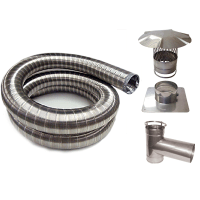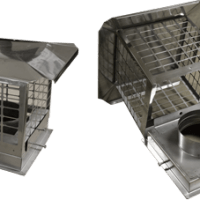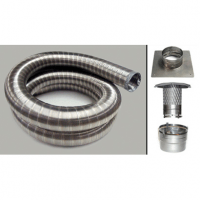What exactly is the gap between a single and double-walled stove pipes? Does the difference, if any, really matter? Well to begin, let’s first explain what a stove pipe is. Basically, inside the simplest terms, stove pipe is an elongated cylindrical tube connected from the stove and useful to release its end products out in to the air. Though it’s no way only an ornamental piece.
Choosing the right stove pipe is important because this device is continually encountered with extreme heat, in fact it is only crucial that you select the one that will withstand this harshest of conditions. Otherwise, it is disaster just waiting to take place.
Just before a stove pipe, it is very important know your own personal purpose. There are several factors to consider such as the specific stove you might be currently using, your requirement for a stove pipe, the wall and ceiling clearance and lastly, the financial aspect.
Types of Stove Pipes:
Wood stove pipes can be found in two types. They’re either venting or vent free, each operating differently through the other. You have to pick which of such two suits your need. Also, most wood stove pipes are made with a 22 or 24 gauge steel. They are either single or double wall construction.
A single wall stove pipe is lighter and generates heat faster. Because of its power to become very hot, it requires at the very least 18 inches of clearance. Involving the two, this is actually the lowest priced.
Moreover, on the downside, single wall construction wood stove pipe has to be replaced from time to time. It has to be completely changed every 3 to 5 years to make certain its safety and efficiency. While you may be able to lower your expenses by buying one that is cheap, over time, by the need to change a single wall stove pipe every now and then, you might be actually spending more.
Alternatively, a double wall construction wood stove pipe was designed to endure two extremes. Its inner wall is made from stainless steel and black steel for its outer wall.
Further, compared to its single wall construction counterpart, a double wall wood stove pipe is way better insulated. For that reason, it may require as little as six inches of wall clearance and eight inches of ceiling clearance, thus making it ideal in tight and cramp spaces. Its main draw however is the fact that it can be used for long term use, able to last many years.
One problem is that it’s heavier helping to make its installation more challenging. Understandably, because of its durability and clearance, it is greater compared to the single wall pipe. Although, because you will not have to change it every now and then, in the long run, its real price is actually lower than those of an individual pipe.
Get Professional Advice:
To avoid wasting resources, it is wise to acquire professional advice on which wood stove pipe suits your preferences prior to purchasing one. This will likely not only help save time, effort and funds, it’ll likewise ensure your safety. Amongst other things, ask professional advice about stove pipe installation and clearance.
Ensure that you are knowledgeable regarding how to properly vent your stove and the best option as regards to positioning it. Have a look at all the necessary elements like building codes before you even proceed with your purchase.
Once you have chosen a pipe, now you need to install it. You’ll find basic steps available on the internet which will make suggestions in the process. Regular maintenance is important once you’ve successfully installed your pipe. Make sure that regular inspection is done to determine if additional maintenance is needed.
Thanks to decades of researches and advancement in technology, wood stoves are great alternatives in terms of affordable home heating. Once properly installed, selecting the most appropriate stove pipe will guarantee an enjoyable stove experience.






